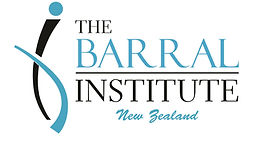
Visceral Manipulation
Visceral Manipulation: Viscerovascular Manipulation; upper and Lower Body (combined)
(VVMU & VVML)
Course Length: 5 days. CPD: 36 hours
Cost: Full price $2200.00 incl GST,
Early Bird $1950.00 incl GST (payment in full required 6 weeks prior to course commencement)
Repeat/Student Rate $1680.00 incl GST
*secure your space now with a $200 deposit
Taught by - Alison Harvey UK
PLEASE NOTE ** This is a combined Upper and Lower Body Visceral Course - covering BOTH the below courses.
UPPER Body (VVMU) Course Description
This course explores evaluation and treatment techniques for the vascular system of the body.
Course Highlights
-
Review the anatomy and physiology of the vascular system, particularly how arteries dilate or diminish in diameter depending on the function of the body.
-
Understand how compression along vascular structures creates restriction patterns and pain throughout the body.
-
Learn to locate and release restrictions along the vascular structures using direct techniques on the arteries like compression, decompression and elongation, as well as indirect techniques using the limbs.
-
Explore manipulation of the soft tissues of the heart itself, aorta, subclavian artery, along with all the arteries connected with the visceral system.
-
Enhance your understanding of how increased blood circulation to an organ improves function of the viscera, and learn how to improve the blood circulation to organs, directly and/or indirectly.
-
Learn treatment of the vaso-pressive system and the brain.
-
Discover the research done with doppler ultrasound to determine the best mobilizations of the arteries to improve local and general blood circulation.
-
Learn practical integration of vascular treatment into the therapeutic session.
Lower Body (VVML) Course Description
This course explores evaluation and treatment techniques for the vascular system of the lower body.
Course Highlights
-
Review the anatomy and physiology of the vascular system, particularly how arteries dilate or diminish in diameter depending on the function of the body.
-
Understand how compression along vascular structures creates restriction patterns and pain.
-
Learn to locate and release restrictions along the vascular structures using direct techniques on the arteries like compression, decompression and elongation.
-
Explore manipulation of the soft tissues of the arteries of the lower body such as the hepatic, splenic, femoral and popliteal.
-
Enhance your understanding of how increased blood circulation to an organ improves function of the viscera, and learn how to improve the blood circulation to organs, directly and/or indirectly.
-
Learn treatment of the vaso-pressive system and the brain.
-
Discover the research done with doppler ultrasound to determine the best mobilizations of the arteries to improve local and general blood circulation.
-
Understand Barral's view of the knee as a 'neurological joint,' and the way to restore intelligence through improved blood flow.
-
Learn invaluable techniques to use after trauma and post-surgery - when conventional musculoskeletal techniques give limited pain and functional relief.
-
Discover the role of the vascular system in treatment post-pelvic, hip and knee surgery.
-
Learn practical integration of vascular treatment into the therapeutic session.
Pre-requisite for VVMU and VVML;
VM4
Required reading for VVMU and VVML:
Visceral Vascular Manipulations by Jean-Pierre Barral, RPT, DO and Alain Croibier, D.O. and review organs from VM1 & 2.
.jpg)